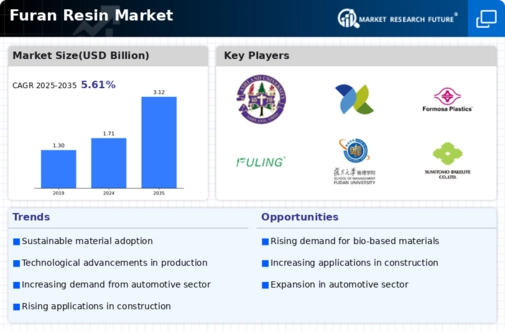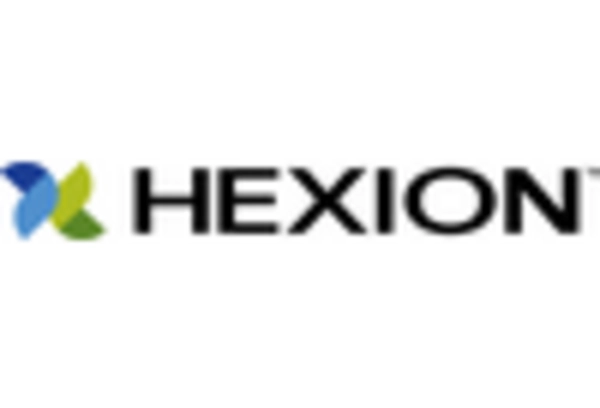Regulatory Support
Regulatory frameworks are increasingly favoring the use of bio-based materials, which is beneficial for the Furan Resin Market. Governments worldwide are implementing policies that promote the adoption of sustainable materials, providing incentives for manufacturers to transition from conventional resins to furan resins. This regulatory support is crucial, as it not only encourages innovation but also aligns with global sustainability goals. The Furan Resin Market stands to gain from these initiatives, as they create a conducive environment for growth and investment. Furthermore, compliance with environmental regulations can enhance market access for furan resin products, making them more appealing to manufacturers seeking to meet stringent standards.
Technological Innovations
Technological advancements play a pivotal role in shaping the Furan Resin Market. Innovations in production techniques, such as the development of more efficient catalytic processes, are enhancing the yield and quality of furan resins. These advancements are expected to reduce production costs and improve the overall competitiveness of furan resins against traditional petrochemical-based resins. Furthermore, the integration of automation and digital technologies in manufacturing processes is streamlining operations, leading to increased efficiency. As a result, the Furan Resin Market is likely to witness a surge in production capacity, catering to the rising demand from various sectors, including construction and automotive, which are projected to grow at a CAGR of 5% over the next five years.
Sustainability Initiatives
The Furan Resin Market is experiencing a notable shift towards sustainability, driven by increasing environmental awareness among consumers and manufacturers. As industries seek eco-friendly alternatives, furan resins, derived from renewable resources such as agricultural by-products, are gaining traction. This shift is reflected in the growing demand for bio-based materials, which is projected to reach a market size of approximately USD 1.5 billion by 2026. Companies are investing in sustainable practices, which not only enhance their brand image but also comply with stringent regulations aimed at reducing carbon footprints. The emphasis on sustainability is likely to propel the Furan Resin Market forward, as more businesses adopt furan resins in their production processes.
Expanding Application Areas
The Furan Resin Market is witnessing an expansion in application areas, particularly in sectors such as construction, automotive, and electronics. Furan resins are increasingly utilized in the production of adhesives, coatings, and composites due to their superior thermal and chemical resistance. The construction sector, for instance, is projected to account for a significant share of the market, driven by the rising demand for durable and high-performance materials. Additionally, the automotive industry is exploring the use of furan resins in lightweight components, which can enhance fuel efficiency. This diversification of applications is expected to bolster the Furan Resin Market, with an anticipated growth rate of 6% annually over the next decade.
Rising Demand from Emerging Economies
Emerging economies are increasingly contributing to the growth of the Furan Resin Market. As these regions experience rapid industrialization and urbanization, the demand for construction materials and automotive components is on the rise. Countries in Asia and Latin America are particularly notable, as they are investing heavily in infrastructure development and manufacturing capabilities. This trend is expected to drive the consumption of furan resins, which are favored for their performance characteristics and sustainability profile. The Furan Resin Market could see a compound annual growth rate of approximately 7% in these regions, reflecting the growing recognition of furan resins as a viable alternative to traditional materials.

















Leave a Comment